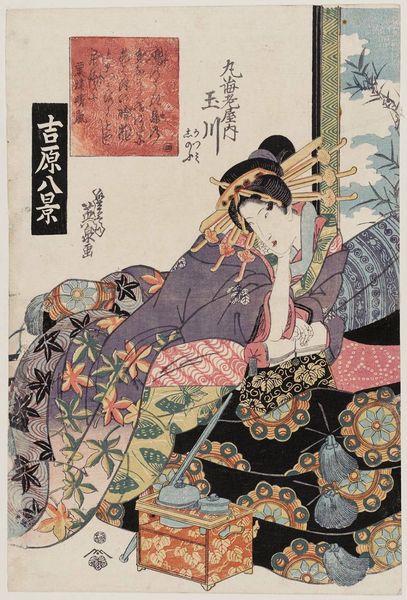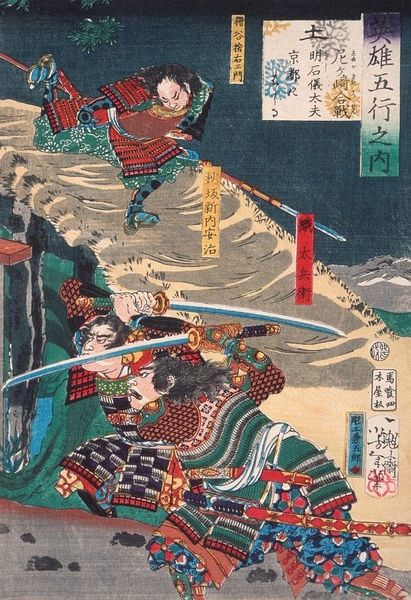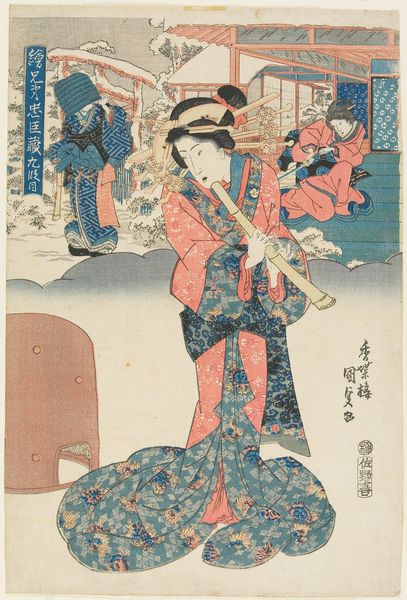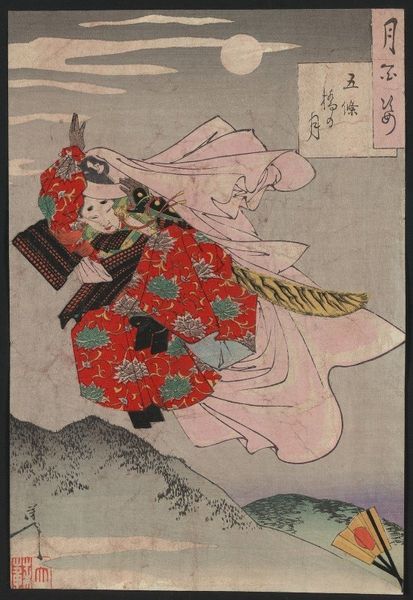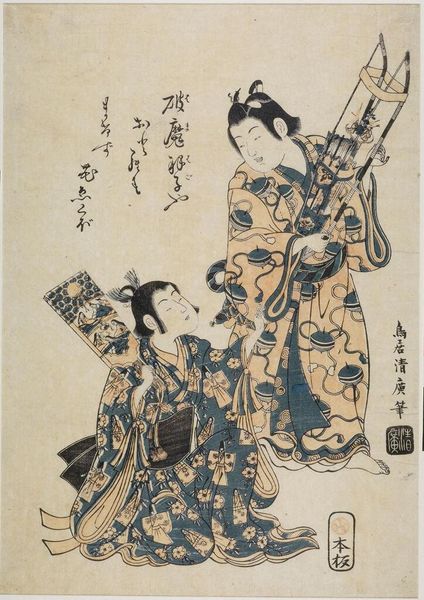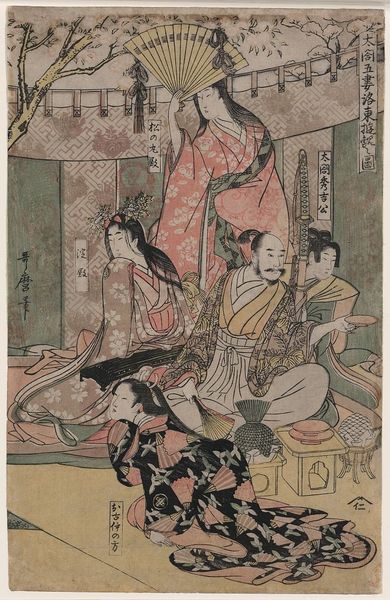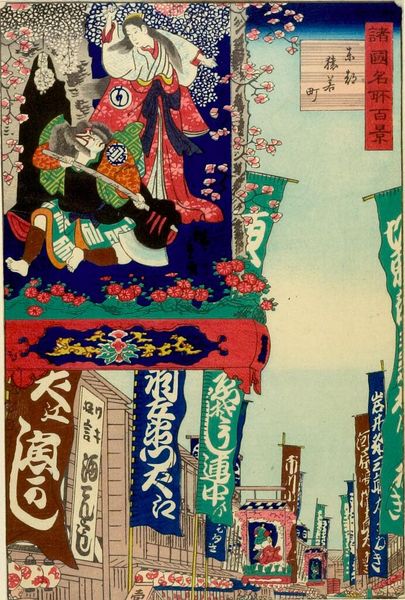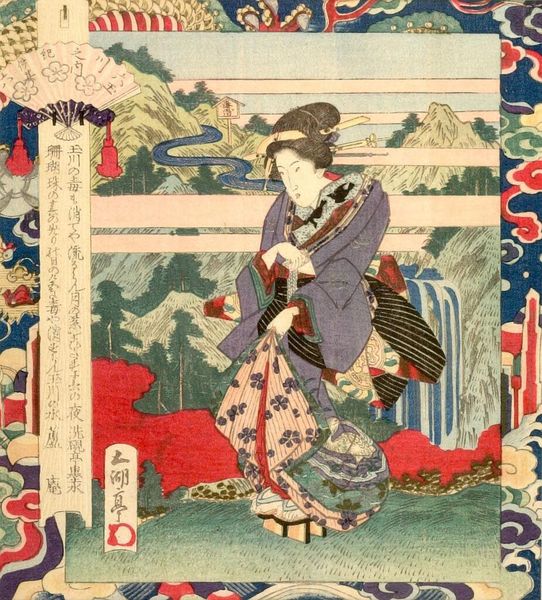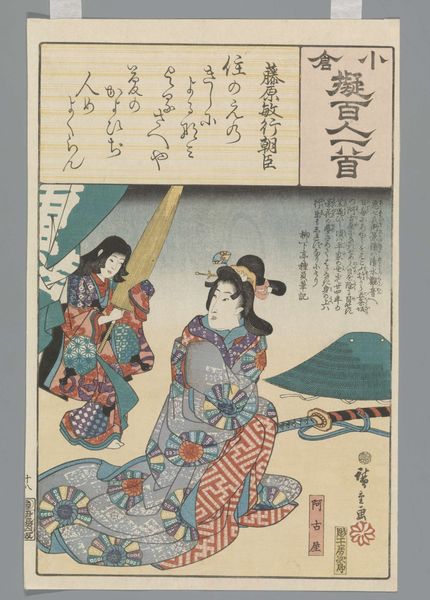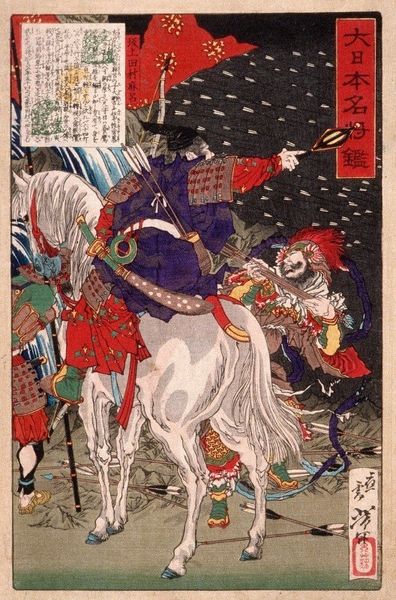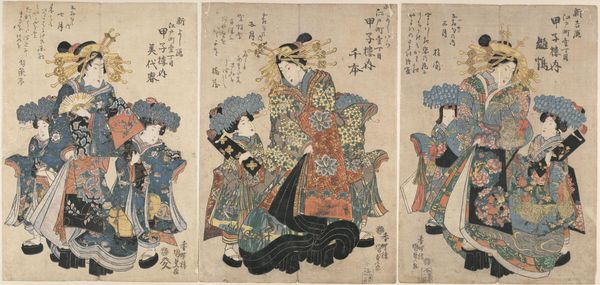
Imayō Dance Performed at the Kimpeirō House in the Yoshiwara District 1875
0:00
0:00
Copyright: Public Domain: Artvee
Tsukioka Yoshitoshi created this woodblock print depicting an Imayō dance, a popular song and dance form, performed at the Kimpeirō house in the Yoshiwara district. Note the prominent display of the dancers' elaborate headwear, each adorned with stylized ornaments. These ornaments, reminiscent of ancient headdresses, echo motifs found in earlier Shinto rituals, where ceremonial attire symbolized a connection to the divine. Similar headdresses can be found across cultures, from ancient Egyptian royalty to Grecian gods, where they mark status and authority. The fan, held delicately in the dancer's hand, is not merely an accessory, but a symbol of power and control. It reappears in many paintings across time, from ancient Crete to Imperial China. Such gestures and symbols tap into a reservoir of collective memory, resonating with viewers on a subconscious level. They represent a non-linear, cyclical progression, resurfacing, evolving, and taking on new meanings in different historical contexts.
Comments
No comments
Be the first to comment and join the conversation on the ultimate creative platform.

